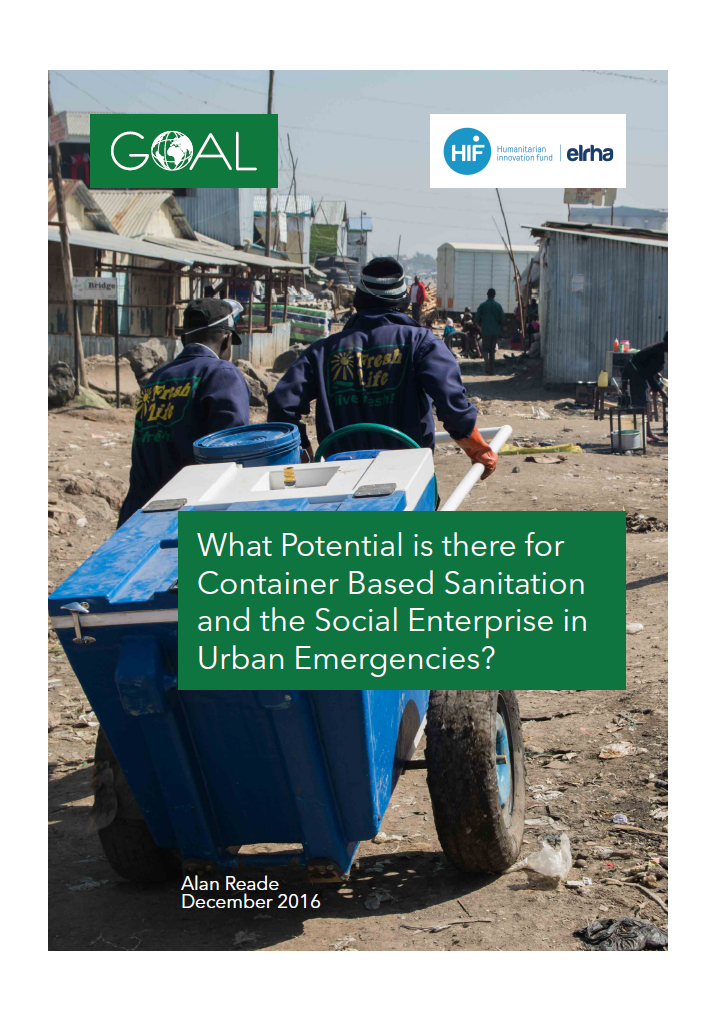What Potential is there for Container Based Sanitation and the Social Enterprise in Urban Emergencies? Reade, A. (2016)
Traditional alternatives have included: lined pit latrines, raised latrines and urine diverting dry toilets (UDDTs). These alternatives might be suitable in addressing the unfavourable ground conditions, but are not necessarily able to address the constraints encountered in the urban environment. For this reason agencies have started to take a closer look at some of the newer container based sanitation (CBS) approaches being developed by social enterprises (SEs), research institutions and the private sector.
In order to assess the possible suitability of the newer CBS technologies, what is needed is a direct comparison of traditional sanitation approaches and CBS in the same, or very similar, setting. Unfortunately many of the new sanitation technologies (CBS and others) are still in relatively early phases of development and have not been piloted in these settings so direct comparison is difficult. Indeed many of the social enterprises, some of which have been operating in relatively stable environments for several years, have still failed to reach significant scale or approach profitability
Bibliographic information
Reade, A. (2016). What Potential is there for Container Based Sanitation and the Social Enterprise in Urban Emergencies? ELHRA
Filter / Tags
Container based systems (CBS)Camps (emergency or longer term)English

